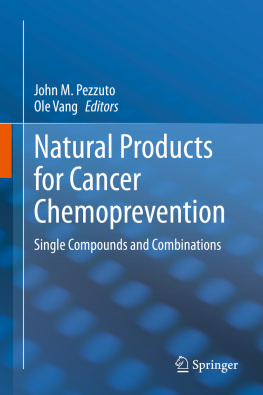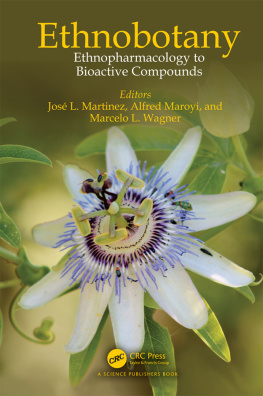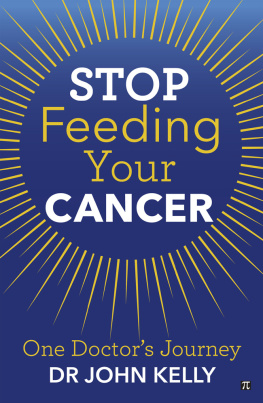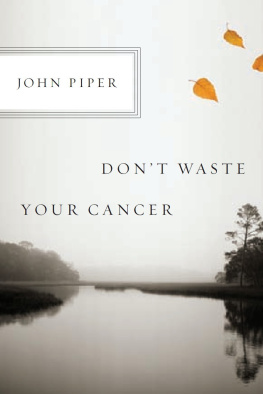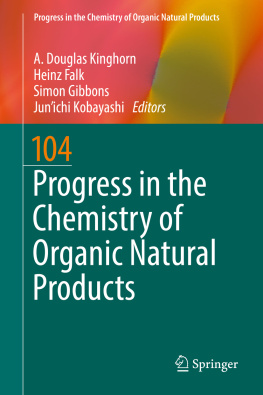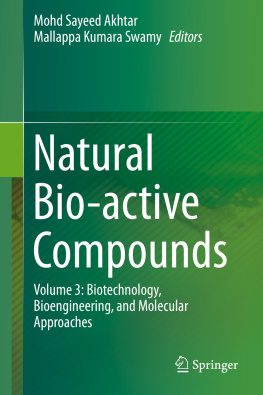John M. Pezzuto - Natural Products for Cancer Chemoprevention: Single Compounds and Combinations
Here you can read online John M. Pezzuto - Natural Products for Cancer Chemoprevention: Single Compounds and Combinations full text of the book (entire story) in english for free. Download pdf and epub, get meaning, cover and reviews about this ebook. year: 2020, publisher: Springer Nature, genre: Romance novel. Description of the work, (preface) as well as reviews are available. Best literature library LitArk.com created for fans of good reading and offers a wide selection of genres:
Romance novel
Science fiction
Adventure
Detective
Science
History
Home and family
Prose
Art
Politics
Computer
Non-fiction
Religion
Business
Children
Humor
Choose a favorite category and find really read worthwhile books. Enjoy immersion in the world of imagination, feel the emotions of the characters or learn something new for yourself, make an fascinating discovery.
- Book:Natural Products for Cancer Chemoprevention: Single Compounds and Combinations
- Author:
- Publisher:Springer Nature
- Genre:
- Year:2020
- Rating:4 / 5
- Favourites:Add to favourites
- Your mark:
- 80
- 1
- 2
- 3
- 4
- 5
Natural Products for Cancer Chemoprevention: Single Compounds and Combinations: summary, description and annotation
We offer to read an annotation, description, summary or preface (depends on what the author of the book "Natural Products for Cancer Chemoprevention: Single Compounds and Combinations" wrote himself). If you haven't found the necessary information about the book — write in the comments, we will try to find it.
John M. Pezzuto: author's other books
Who wrote Natural Products for Cancer Chemoprevention: Single Compounds and Combinations? Find out the surname, the name of the author of the book and a list of all author's works by series.
Natural Products for Cancer Chemoprevention: Single Compounds and Combinations — read online for free the complete book (whole text) full work
Below is the text of the book, divided by pages. System saving the place of the last page read, allows you to conveniently read the book "Natural Products for Cancer Chemoprevention: Single Compounds and Combinations" online for free, without having to search again every time where you left off. Put a bookmark, and you can go to the page where you finished reading at any time.
Font size:
Interval:
Bookmark:


This Springer imprint is published by the registered company Springer Nature Switzerland AG.
The registered company address is: Gewerbestrasse 11, 6330 Cham, Switzerland
This book is dedicated to the millions of human beings who have suffered the pain and anguish of cancer; had they only been given greater therapeutic options, we would be in a better place.
The intense, unrelenting, worldwide burden of suffering and death from cancer demands new approaches to its control. It is almost 50 years since President Nixon declared War on Cancer, and the war has yet to be won with conventional modalities of treating invasive and metastatic disease. Indeed, alarming and unexplained recent increases in both incidence and death from both adenocarcinoma of the lung in nonsmokers and pancreatic ductal adenocarcinoma now represent particularly new challenges. Because incidence drives mortality, it is common sense that we must find new ways to prevent incidence. That is the subject of this book.
Although immunotherapy of cancer is currently very much in vogue in the oncology community (and very much the darling of the investment world), it has major limitations for control of the worldwide cancer problem. Most tellingly, many immunotherapies cost hundreds of thousands of dollars per patient, and even then they may not always be curative. Immunotherapies are often complicated with serious side effects. Extension of life is not the ultimate goal; it is quality of life that counts for the individual. Moreover, it is not ethically satisfactory that immunotherapy should be available only to those who can afford it, while millions of indigent cancer patients throughout the world go without treatment. Although ultimately we may achieve an effective form of immunoprevention, at present such an approach is a long way from actual implementation.
Therefore, for the present, it should be intuitively obvious that an immediate goal for control of cancer is to find some relatively inexpensive and safe modality to prevent the disease, before a person must undergo all the mental anguish and physical suffering that result from a diagnosis of invasive malignant disease.
Although several approaches to prevention of cancer could be considered, this book will deal with the simplest and perhaps most logical, namely the use of natural products as drugs for chemoprevention. People have been modifying their diet or intake of plant products for thousands of years with the goal of achieving the healthier life that the intake of specific natural products (or combinations of such products) might provide. Indeed, we have been doing spontaneous, unnamed chemoprevention studies on ourselves for many generations. We have been modifying the epigenetic microenvironment of potential cancer cells by what we eat and otherwise ingest for thousands of years and thus have modified patterns of gene expression. Indeed, one might consider that cancer is essentially an epigenetic disease, as Andrew Feinberg has suggested, and that alterations in epigenetics (in its broadest sense) offer a compelling strategy to prevent cancer.
With the advent of the isolation of specific chemicals from plant sources and elucidation of their chemical structures, it is now possible to do chemoprevention in studies in a much more systematic manner, with control of dosage and measurement of both desired endpoints, as well as undesirable side effects, dependent on dosage. Chemicals that are natural products have an intrinsic advantage (as compared to totally new synthetic chemicals) for chemoprevention, in that the basic safety of ingesting these naturally occurring molecules has already been established by hundreds of years of human use, especially if they occur in the diet. However, natural products may also have limitations, especially in terms of their limited potency. In this case, it may be possible to increase potency by using a fundamental naturally occurring molecule as a platform or scaffold for chemical modification, as has been done with new analogs of vitamin D. Another practical example of this has been chemical synthesis of new analogs of oleanolic acid, a natural triterpenoid, found in high amounts in olives. Such new analogs have been shown to have chemopreventive activity for many diseases, including cancer; chemical modification of oleanolic acid has increased anticarcinogenic activity more than 1000-fold.
This book will not only consider the empirical identification and use of natural products for chemoprevention. There will be chapters that will emphasize mechanistic approaches to chemoprevention, by focusing on control of pathways that are uniquely dysfunctional during carcinogenesis. Such pathways can be rather general, such as those involved in inflammation, or more specific, such as EGF receptor signaling. This approach then allows screening of large libraries of potential chemopreventive agents, whether they are natural products or their synthetic derivatives.
A few examples currently exist in which cancer chemoprevention makes an important difference in the general population (e.g., tamoxifen for breast cancer, finasteride for prostate cancer). It is intuitively clear, however, that the impact of chemoprevention could be much more far-reaching. This is especially true for individuals at high risk, such as those who have had a primary tumor surgically resected and then enter a period of wait and watch. Even more broadly, given the overall incidence of cancer, essentially every human being is at risk. It is hoped the information provided in this book will be of some value in promoting the true goal of the War on Cancer espoused by the Nixon administration and subsequently by many others, which is to eradicate cancer as a major cause of death.
Font size:
Interval:
Bookmark:
Similar books «Natural Products for Cancer Chemoprevention: Single Compounds and Combinations»
Look at similar books to Natural Products for Cancer Chemoprevention: Single Compounds and Combinations. We have selected literature similar in name and meaning in the hope of providing readers with more options to find new, interesting, not yet read works.
Discussion, reviews of the book Natural Products for Cancer Chemoprevention: Single Compounds and Combinations and just readers' own opinions. Leave your comments, write what you think about the work, its meaning or the main characters. Specify what exactly you liked and what you didn't like, and why you think so.

